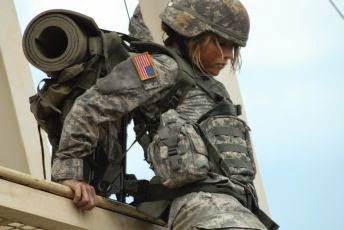All Hands - man battle stations!!
Perhaps the most endearing and least appreciated objet d'ar of Great Satan's hyper puissance is her globe prowling Naval naughtiness.
See, Navy’s ability to provide the president with a variety of timely regional response options is its marquee contribution to American military strategy.
Yet has her reliability and readiness become a detriment to the greater strategic ends of readiness to deter and conduct great power war?
Faced with the prospect of a humanitarian nightmare (at best) and genocide (at worst) in northern Iraq, 44 made the decision to initiate a limited intervention, including an air drop of food and water to Yazidi refugees and of ordnance on their oppressors, the Islamic State of Iraq and the Levant (ISIL). The combat power behind the latter operation came initially from the air wing of the USS George H.W. Bush the centerpiece of the nation’s on-call naval presence in the Arabian Gulf. For decades, the Navy has operated at least one aircraft carrier strike group in or near the Arabian Gulf, in addition to various other elements of naval power including cruise missile submarines and amphibious forces for delivering the U.S. Marine Corps’ own particular brand of combat power. When tensions rise in the region, a second carrier strike group is routinely deployed, straining already thinly arrayed assets.
These forward deployed naval forces—as the strikes on ISIL have highlighted—provide the president with a variety of response options to regional crises, both military and humanitarian. The 2013 earthquake in the Philippines demonstrated this equally well, as the U.S. Navy was able to sortie over a dozen ships to participate in the humanitarian relief effort within days. The reliability of on-call naval forces has achieved an almost “background music” quality in national security circles, with the trite cliché that presidents always ask, “Where are the carriers?” when the excrement hits the oscillating unit having achieved widespread recognition.
The Navy is seemingly able to respond to whatever it is asked to do. This is a particular point of pride within the service, and the “can-do” spirit (certainly not peculiar to the Navy) means that whatever must be done, will be done, to meet the president’s requirements. It is not difficult to imagine that this readiness and availability is quite comforting to U.S. presidents. It does, however, present us with a potential paradox: Since the Navy seems to be able to respond whenever and wherever it is needed, it must be adequately sized, and even possibly, too big.
There is a certain rationality to this view, as long as one views the Navy simply as a crisis response force. And while this is the predominant mode d’emploi of the Navy in peacetime, its wartime value slips further from the discussion and its readiness for high-end warfighting declines in comparison to its potential adversaries. This is the state of things today, although as recent events have shown, the Navy’s ability to respond even to regional crises has declined.
The U.S. Navy is to some extent, a victim of its own success. It consistently provides presidents with flexible options for response and it rarely has to say, “No, we cannot do that.” Unless a president comes into office with the idea that the nation must begin to prepare for the rigors of great power competition again, the Navy will appear sufficiently sized to meet the requirements of crisis response, for these are the requirements against which its size and capabilities are resourced.
And since there is no bureaucratic incentive for anyone within the chain of command to advocate for such preparation in the absence of presidential leadership, we may unfortunately someday find ourselves with a navy we can afford, but not the one we need.
Pic - "Three Hub Navy!"















0 comments:
Post a Comment